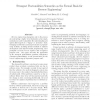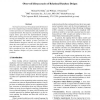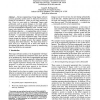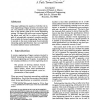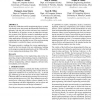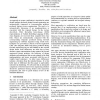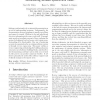WCRE
1995
IEEE
14 years 3 months ago
1995
IEEE
Reverse engineering of program code is the process of constructing a higher level abstraction of an implementation in order to facilitate the understanding of a system that may be...
WCRE
1995
IEEE
14 years 3 months ago
1995
IEEE
Several processes have been advanced in the literature for reverse engineering of relational databases. The inputs to these processes are relational tables and available contextua...
WCRE
1997
IEEE
14 years 3 months ago
1997
IEEE
Reverse Engineering is focused on the challenging task of understanding legacy program code without having suitable documentation. Using a transformational forward engineering per...
ICSE
1995
IEEE-ACM
14 years 3 months ago
1995
IEEE-ACM
— Reverse engineering of large legacy software systems generally cannot meet its objectives because it cannot be cost-effective. There are two main reasons for this. First, it is...
ICSE
1995
IEEE-ACM
14 years 3 months ago
1995
IEEE-ACM
This paper addresses the question of whether the reverse engineering of legacy systems is doomed to failure. Our position is that the answer is highly dependent on the specific go...
OOPSLA
2000
Springer
14 years 3 months ago
2000
Springer
Reverse engineering is the process of uncovering the design and the design rationale from a functioning software system. Reverse engineering is an integral part of any successful ...
ICSE
2000
IEEE-ACM
14 years 3 months ago
2000
IEEE-ACM
By the early 1990s the need for reengineering legacy systems was already acute, but recently the demand has increased significantly with the shift toward web-based user interfaces...
ACSC
2004
IEEE
14 years 3 months ago
2004
IEEE
An approach to system verification is described in which design artefacts produced during forward engineering are automatically compared to corresponding artefacts produced during...
SIGDOC
1992
ACM
14 years 3 months ago
1992
ACM
Softwareprofessionals rely on internaldocumentationas an aid in understanding programs. Unfortunately, the documentation for most programs is usually out-of-date and cannot be tru...
SIGSOFT
1994
ACM
14 years 3 months ago
1994
ACM
A dependence model for reverse engineering should treat procedures in a modular fashion and should be fine-grained, distinguishing dependences that are due to different variables....
